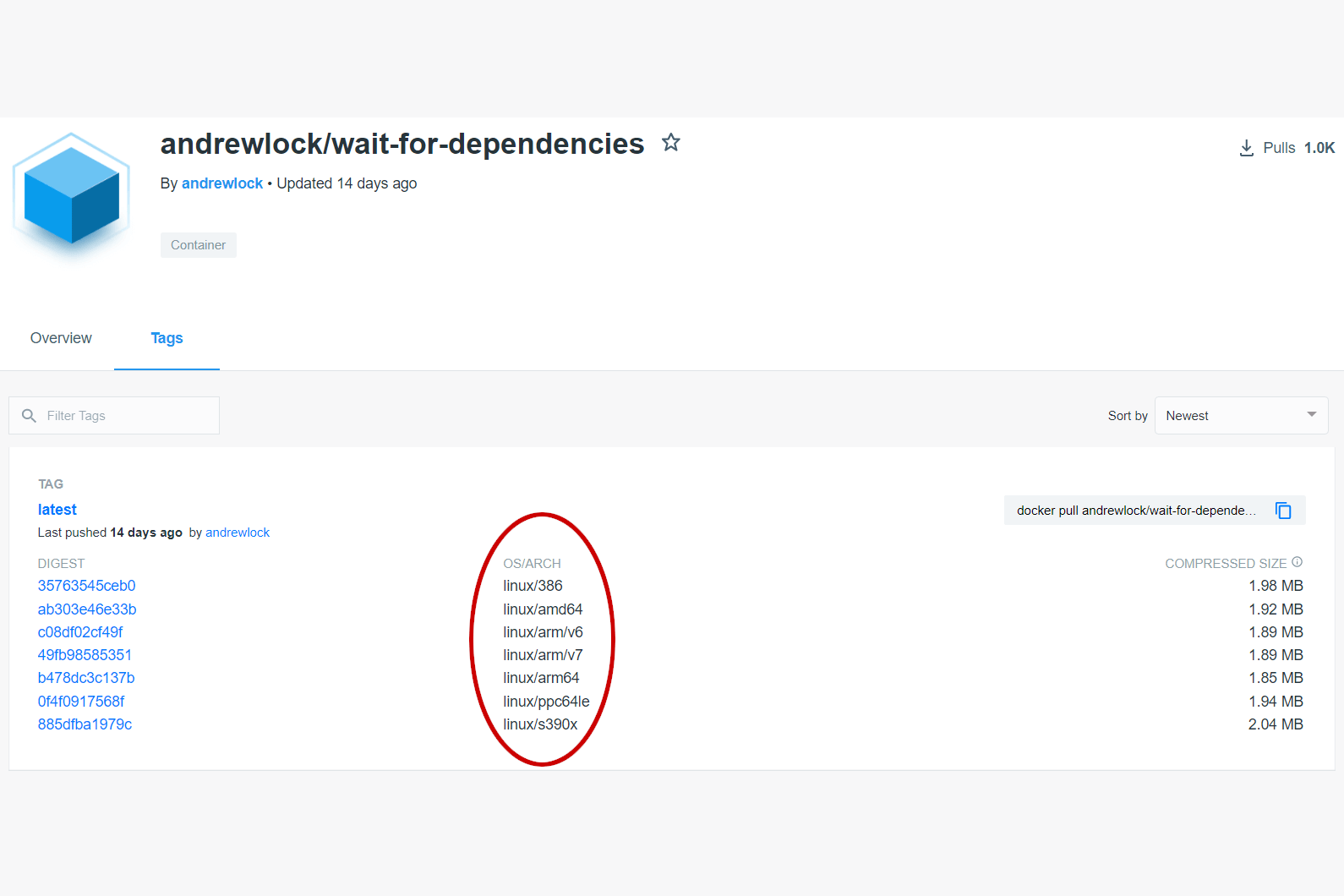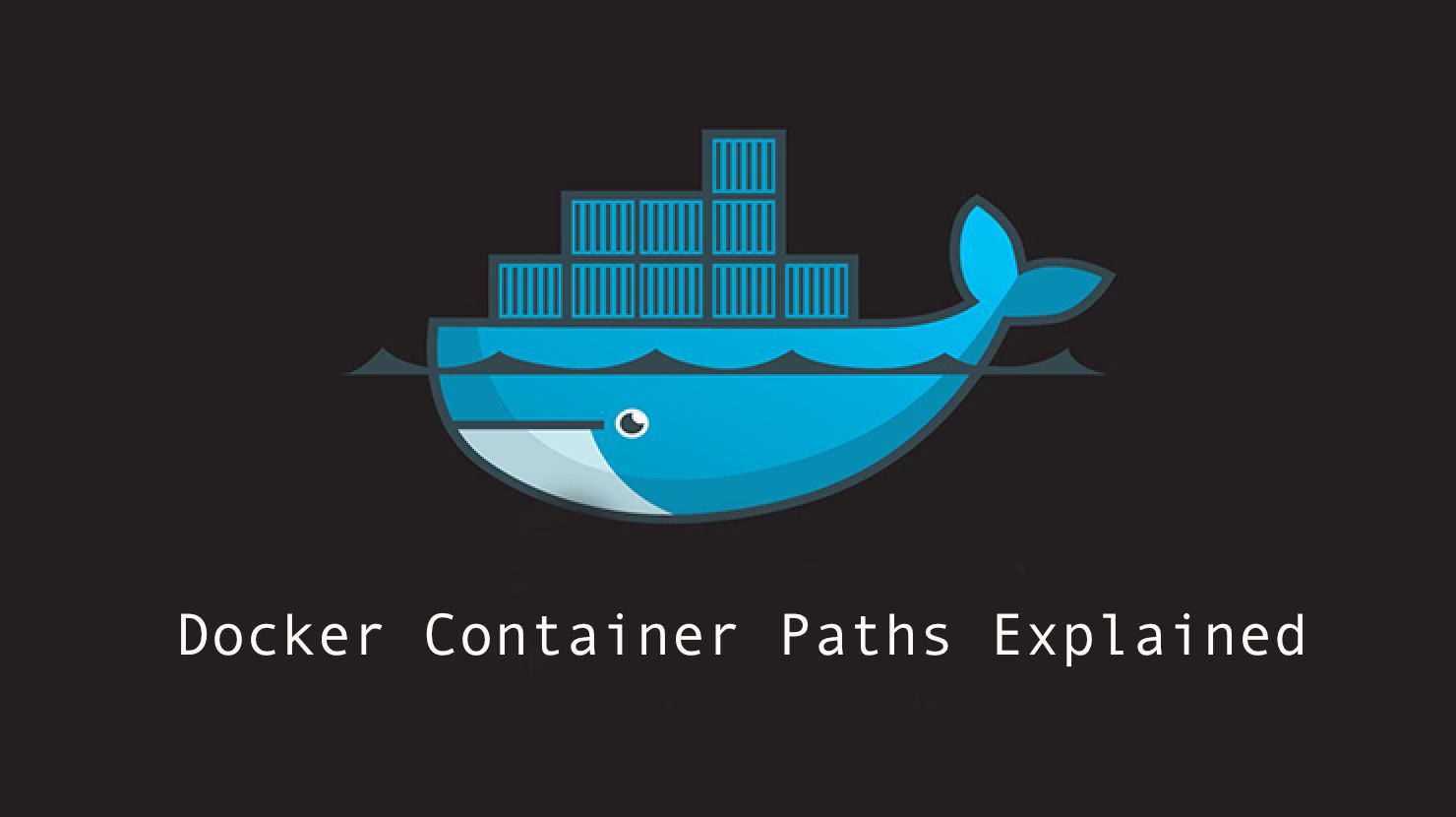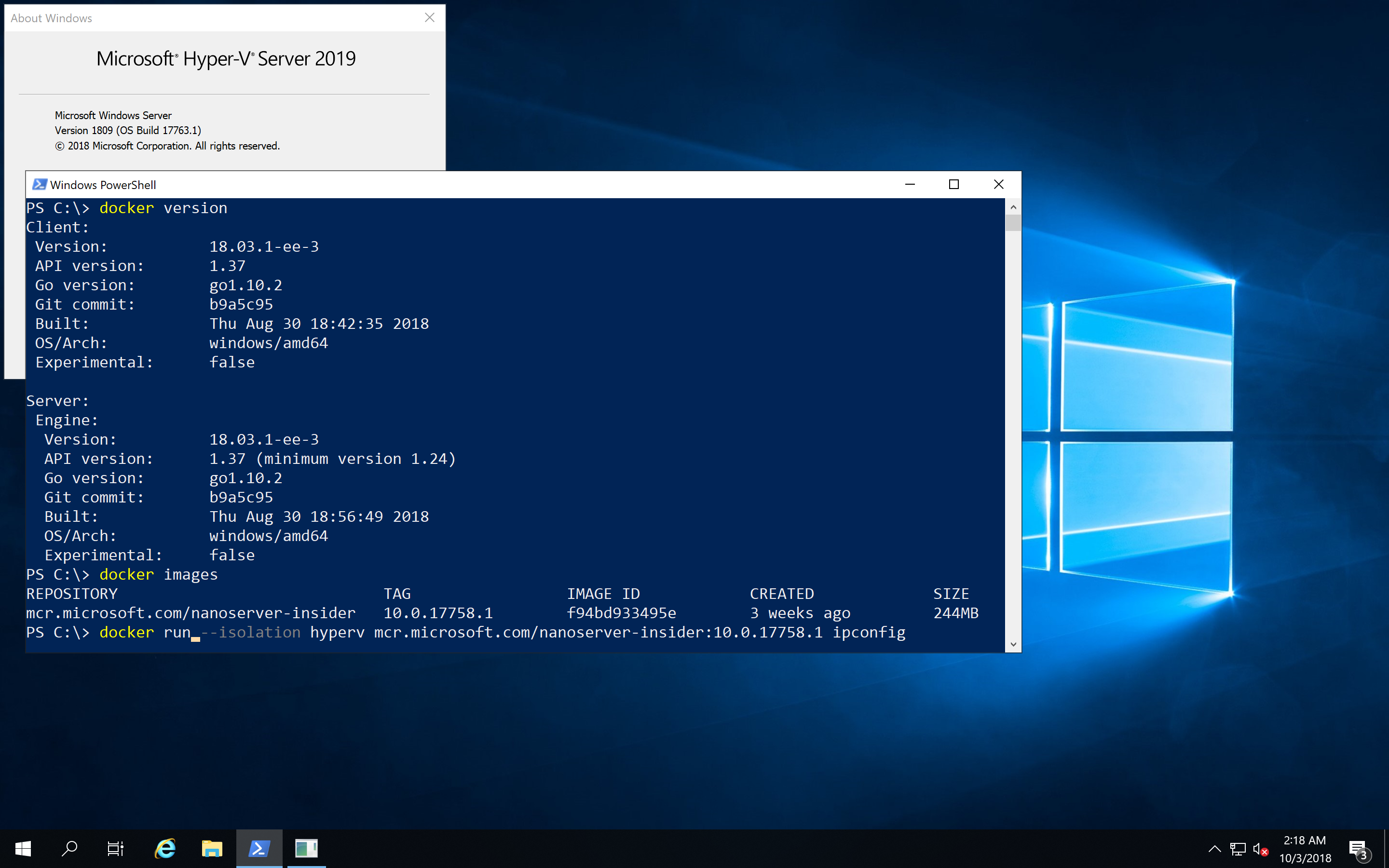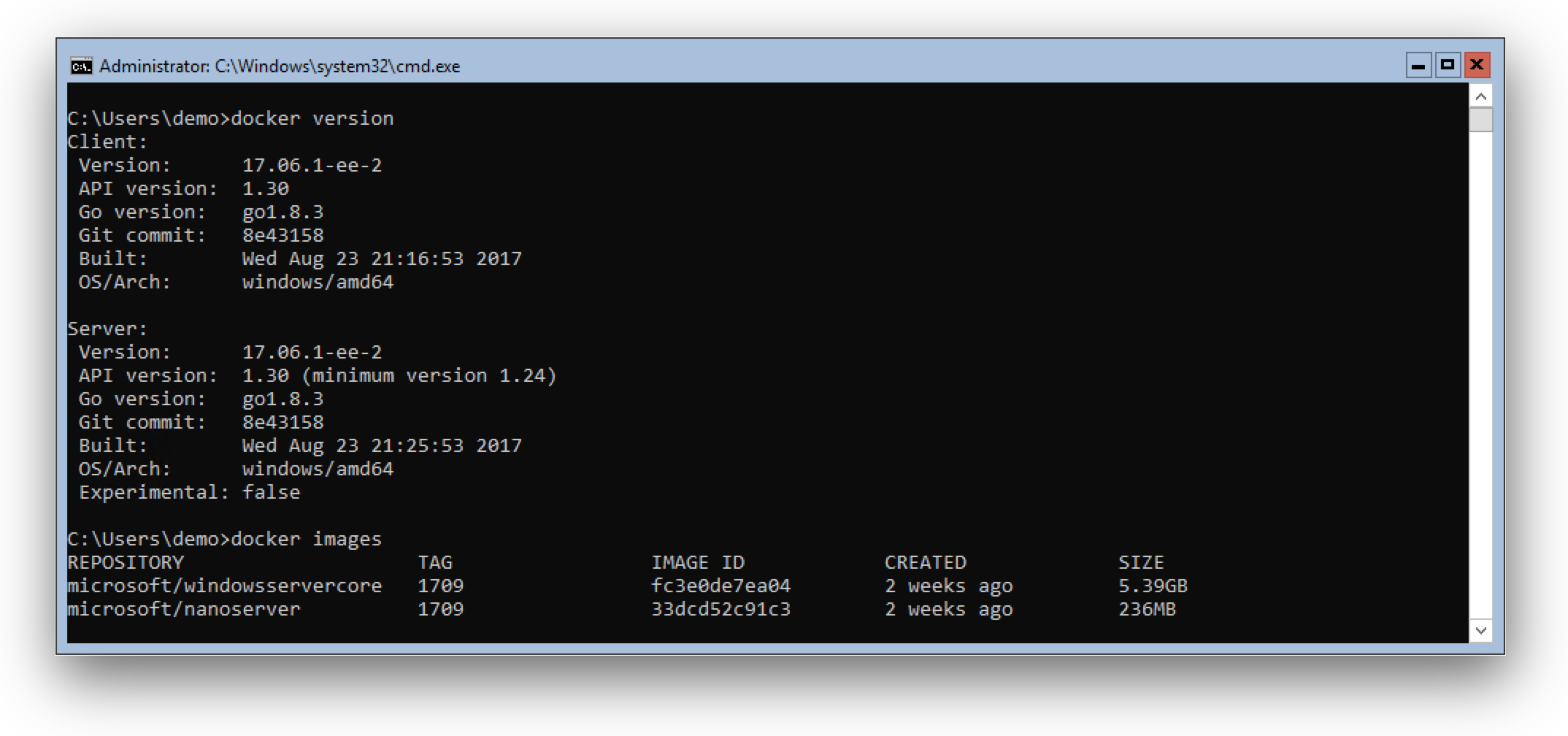√1000以上 windows docker image size 144771-Reduce windows docker image size
docker images The output will look like the following screenshot As we have used the Windows Nano Server to build the image, the image size is quite small (totaling 457MB) Please note that, as we have not provided a tag, Docker has added the latest tag to the node image (as you can see in the screenshot) Reducing Docker Image The above configuration file will build a Docker image with a size of about 13GB, which looks a bit scary because downloading is too timeconsuming even with a fast network Thanks @MichaelSimons that's a decent alternative I'm curious to know what the limitations are for dotnetframework that it requires the full windowsservercore as a base image Kind unrelated to this issue but to be honest even ~5GB is quite large in terms of docker image correct me if I'm wrong but its almost as if a VM (base server OS) image is being converted to a docker image

Lcow Linux Containers On Windows Server Logs Links Notes Recipes
Reduce windows docker image size
Reduce windows docker image size- The Windows image is built by running setupexe install It's not ideal, but for now our focus is on making the docker experience for SQL on Linux containers great Pull and usage telemetry tells us that SQL on Linux containers is much more widely used right nowDocker images are installed as layers on a hosts physical operating system You can get a "full" read of the base image size by issuing the command below (showing the associated output with sizes) codedocker images REPOSITORY TAG




Ipgray Docker How To Uninstall Docker Container From Windows Youtube
With the goal of maximizing application compatibility, the C drive in a Windows container represents a virtual free size of GB Some users may want to override this default and configure the free space to a smaller or larger value this can be accomplished though the "size" option within the "storageopt" configuration Hi, windows container's disk space default is G I want to extend it And I start docker daemon like this dockerdexe g E\docker storageopt size=50G and start the container as follows docker run name test v E\volume_d\d it microsoft/windowsservercore powershell but the disk space size is still G Docker Desktop for Windows v2, which uses WSL2, stores all image and container files in a separate virtual volume (vhdx) This virtual hard disk file can automatically grow when it needs more space (to a certain limit) Unfortunately, if you reclaim some space, ie by removing unused images, vhdx doesn't shrink automatically
$ docker images REPOSITORY TAG IMAGE ID CREATED SIZE python latest 9038c75f5336 12 hours ago 933MB nginx latest 5ad3bd0e67a9 2 days ago 127MB nginx 5a3221f0137b 5 months ago 126MB ubuntu latest a2a15febcdf3 5 months ago 642MB Docker images The heaviest contents are usually images If you use the default storage driver overlay2, then your Docker images are stored in /var/lib/docker/overlay2 There, you can find different files that represent readonly layers of a Docker image and a layer on top of it that contains your changes Understanding Docker Build and Images The docker build command can be leveraged to automate container image creation, adopt a containerascode DevOps practice, and integrate containerization into the development cycle of your projects Dockerfiles are simply text files that contain build instructions used by Docker to create a new container image that is based on an existing image
Windows systray > docker for windows > docker settings > advanced > disk image location All database files will be stored in this docker image, thus the image size will grow in size accordingly You may also want to change the docker settings This is to allow docker to use more of the Systems's resources Docker build is the Docker engine command that consumes a Dockerfile and triggers the image creation process This topic will show you how to use Dockerfiles with Windows containers, understand their basic syntax, and what the most common Dockerfile instructions are This document will discuss the concept of container images and container image docker history iis IMAGE CREATED CREATED BY SIZE COMMENT f4caf476e909 16 seconds ago cmd /S /C REM (nop) CMD "cmd" 4184 kB f0e017e5b0 21 seconds ago cmd /S /C echo "Hello World Dockerfile" > c 6816 MB 438e174b7c About ll / 1627 MB 6801d964fda5 4 months ago 0 B




Default Resource Limits For Windows Vs Linux Containers In Docker Desktop Dba From The Cold




Lab Guide Working With Containers On Windows 10 Includes Docker And Nano Step By Step Itproguru Blog
The total disk consumption is *980 10* = 980 0 = 1180 MB* This is 118 MB per image, or *118%* of the image size reported by the docker image command In the second example, all these images differ only in the larger layer (the 980 MB one) and share the smaller layer (the MB one)The Docker daemon pulled the "helloworld" image from the Docker Hub (amd64) 3 The Docker daemon created a new container from that image which runs the executable that produces the output you are currently reading 4 The Docker daemon streamed that output to the Docker client, which sent it to your terminal Disk image size Specify the size of the disk image (Blog Post) gives a quick tour of how to build and run native Docker Windows containers on Windows 10 and Windows Server 16 evaluation releases Getting Started with Windows Containers (Lab)




The Size Of Docker Images Containing Openjdk 11 0 6




Make Your Own Sql Server Docker Container Kohera
Avoid Adding Unnecessary Layers to Reduce Docker Image Size A Docker image takes up more space with every layer you add to it Therefore, the more layers you have, the more space the image requires Each RUN instruction in a Dockerfile adds a new layer to your image That is why you should try to do file manipulation inside a single RUN commandTo enable docker manifest inspect, edit ~/docker/configjson file and set experimental to enable(Reference docker manifest inspect) Push the image to Docker Hub and you can get the compressed size of the image on Docker Hub website Use docker save to save image to a tar file and then compress it a targz file docker save myimagelatest The base Image of microsoft\windowscoreserver has size of 8 gb when I see through docker images Once I build my image using windowsservercore, the size reaches 92 GB Is it valid, why would someone deply an image that is 9GB in size and rather not choose VM over it Is there something that I am doing wrong




Using Powershell To Deploy A Docker Container In Windows Server 16 Usefulware Sharing




Creating Docker Multi Arch Images For Arm64 From Windows
Description Unable to build windows images larger then GB Am able to run images with storageopt size>G, either with docker run storageopt or dockerd registerservice storageopt Steps to reproduce the issue Windows 10 19 To increase the overall storage pool size of Docker machine, follow these steps 1 Backup all the existing Docker containers and images that you need and copy them to an external location 2 Stop the Docker daemon 3 Clear the current Docker default directory, which will delete all existing containers and images 4 Docker Image Size Run Down We compiled a list of some of the most popular Base OS Images based on Docker Hub downloads and File Size The list is not who is best or worst but a an overview of the usage by the community and image size The best image will depend on your environment and application requirements




Extending Powershell And Docker Containers The Lonely Administrator




Install Docker In Windows Server 19 Virtualization Howto
To check the size of each running container what you could do is just use the size argument of docker ps command docker ps size Copy Copy You would get the following output CONTAINER ID IMAGE COMMAND CREATED STATUS PORTS NAMES SIZE d64a8112d00a nginx "nginx g 'daemon of" In this article The Official NET Docker images are Docker images created and optimized by Microsoft They are publicly available in the Microsoft repositories on Docker HubEach repository can contain multiple images, depending on NET versions, and depending on the OS and versions (Linux Debian, Linux Alpine, Windows Nano Server, Windows Server Core,If you are on windows 10 and running windows containers In the above image, docker is running windows containers So its showing switch to linux containers First run docker info command (more specific docker info format "{{json DockerRootDir}}") You should see root dir as Docker Root Dir C\ProgramData\Docker




I Thought Docker Could Run Anywhere Why Is There Docker For Windows Docker For Linux And Docker For Osx Quora




Docker Windows Containers For Server And Desktops Docker
When running docker images using Windows 10 professional, the docker virtual disk MobiLinuxVMvhdx keeps on growing After having finished with the images/container, and deleting them all, the virtual disk does not shrink in size Expected behavior MobiLinuxVMvhdx should shrink and release the unused space Steps to reproduce the issue As a result of the pushed, The Windows Server 19, Server Core container image was not available until today Download Below, I will show you how to download the latest Windows Server 19, Server Core Container image The Image size is 15 GB compared to 6GB when it was first released on Windows Server 16 Hi all, I am running to the default limit of GB building images with Docker for Windows I could easily change the disk size for one particular container by running it with storageopt size option docker run storageopt size=1G




Steps To Increase Docker Container Size Easily




Docker Desktop For Windows User Manual Docker Documentation
Used Docker Squash to reduce the size of the final image This is effective if your image has multiple layers created using RUN clause The Squash attempts to create a single layer out of all the layers and thus reduced the overall size I did get the size down up to ~12% for a few images after modifing the docker daemon startup parameters do the following systemctl daemonreload systemctl stop docker rm rf /var/lib/docker/* systemctl start docker This will remove all your images, make sure you save them before eg docker save o somethingtargz image_name and reload them after starting docker eg docker load i somethingtargzNote Docker only supports Docker Desktop on Windows for those versions of Windows 10 that are still within Microsoft's servicing timeline What's included in the installer The Docker Desktop installation includes Docker Engine, Docker CLI client, Docker Compose, Docker Content Trust, Kubernetes, and Credential Helper Containers and images created with Docker Desktop are




Containers For Itpros Containers Windows Admin Center Microsoft Tech Community



Take A Dip Into Windows Containers With Openshift 4 6
I am running docker on windows 10 I had a couple of images stored in my machine The total size of these images accumulated to around ~10GB I have deleted these images via 'docker rmi f' command But the space occupied by these images Docker volumes on Windows are always created in the path of the graph driver, which is where Docker stores all image layers, writeable container layers and volumes By default the root of the graph driver in Windows is C\ProgramData\docker , but you can mount a volume to a specific directory when you run a container To measure the uncompressed size of a Docker image, it is easiest to pull the image locally You can then retrieve the size of the image with the docker inspect command




How To Increase Swap Size On Docker For Windows Stack Overflow




Lessons Learned Using Docker For Development And Testing On Windows Octopus Deploy




What S New For Docker On Windows Server 19



Docker Desktop For Windows




A Closer Look At Docker On Windows Server 1709




Docker Multi Architecture Images Let Docker Figure The Correct Image To By Davide Mauri Medium




Learn How To Update Docker Images Easily And Quickly




Windocks Sql Server Containers On Windows Docker Inc S Open Source Project Ported By Windocks




Docker Windows Nanoserver Exits Immediately Docker




How To Setup Php Php Fpm And Nginx On Docker In Windows 10 Tutorial Part 1 Pascallandau Com




Building Windows Containers With Aws Codepipeline And Custom Actions Aws Devops Blog




Building And Running Asp Net Core Application In Docker Container




Docker Python Tutorial How To Use It




Where Are Docker Images Stored Docker Container Paths Explained




Memory Allocation To Docker Containers After Moving To Wsl 2 In Windows Stack Overflow




Lcow Linux Containers On Windows Server Logs Links Notes Recipes



Docker Volumes On Windows Mapping The G Drive For Stateful Apps



Q Tbn And9gcswkxn Y1tsoesyaclzwovsgnyqg9lkbrlremwyoi2hy6sn39vi Usqp Cau




How To Reduce Size Of Docker Data Volume In Docker Desktop For Windows V2 Dev Community




Windows 10 Containers Are The Future And Here S What You Need To Know Techrepublic



Getting Started With Docker On Windows Server 19




What S New For Docker On Windows Server 19




Run Iis Asp Net On Windows 10 With Docker




Docker Container Images For Windows Server 1709 And New ging Thomas Maurer




The New Windows Container Image Thomas Maurer




Definition Of Docker Pcmag



1 2 3 Go Run Iis In Docker On Windows Server 16 Evaluation




Install Docker Desktop On Windows Docker Documentation




Application Container Market Size Share And Global Market Forecast To 23 Marketsandmarkets




Sql Server With A Docker Container On Windows Server 16




Lessons Learned Using Docker For Development And Testing On Windows Octopus Deploy




How Docker Runs Windows Containers And Why The Size Is Big Docker Desktop For Windows Docker Forums




What S New For Docker On Windows Server 19




Docker Desktop For Windows User Manual Docker Documentation




Jelastic Launches Support For Production Ready Docker Windows Xp Clipart Large Size Png Image Pikpng



Docker Desktop For Windows User Manual Docker Documentation




Containers For Deep Learning Frameworks User Guide Nvidia Deep Learning Frameworks Documentation




Use Redis On Docker Programmer Sought



1



Eclipse Community Forums C C Ide Cdt Using Docker Launcher For Linux Container In Windows Eclipse Oxygen




Install Docker On Windows Server 19 4sysops




Windows Server 19 Container Image Available For Download Learn It And Devops Daily




Azure Iot Edge Managing Windows Container Sizes Kevin Saye




Using Docker Windows Containers With Databases




Windows Container Base Images Microsoft Docs




Docker On Windows 10 Beginner S Guide Businessnewsdaily Com




Get Started With Docker Containers On Wsl Microsoft Docs




Issue Adjusting Docker Machine Vm Size Docker Desktop For Windows Docker Forums




How To Install Docker On Windows 10 Home Sitepoint




Ipgray Docker How To Uninstall Docker Container From Windows Youtube




Installing The Docker Client On Windows Subsystem For Linux Ubuntu By Sebastian Gomez Medium




Docker Windows Containers For Server And Desktops Docker




Docker Tutorial For Beginners Basics Architecture Containers




Docker Image Size How To Keep It Small




Docker Installation And Configuration Requirements




Windows 10 Location Of Docker Image Super User




Working With Linux And Windows Containers Simultaneously On Docker Desktop




About Storage Drivers Docker Documentation




Docker Review Pcmag




No Kubernetes How To Run Docker Containers In Azure Vm Scale Sets




Comparing Container Services On Microsoft Azure




Install Docker In Windows Server 19 Virtualization Howto




How To Create A Docker Windows Image With Docker Build




How To Create A Docker Windows Image With Docker Build



1




Getting Started On Docker For Windows Riff Is For Functions



Remove Docker Images With Powershell Dan Kinsella




Docker Base Os Image Size Comparison




Deploy Iis On Windows Nano Server 16 Container Learn It And Devops Daily




Scottgu S Blog Announcing Windows Server 16 Containers Preview




Docker Desktop For Windows User Manual Docker Documentation




What S New For Docker On Windows Server 19




How To Assign More Memory To Docker Container Stack Overflow




Creating Your Own Sql Server Docker Image




Docker Container Services Building Hybrid Clouds With Azure Stack




Learn Docker In A Month Of Lunches Learn Docker In A Month Of Lunches



Nav And Business Central Docker Images Now Available For Windows Server 19 Freddys Blog




How To Use Windows Docker Containers By Sithum Meegahapola Medium




Docker For Windows Desktop 18 02 With Windows 10 Fall Creators Update Docker Blog




Chaminda S Devops Journey With Msft Choosing Right Size For Windows 10 Vm In Azure To Run Docker




A Closer Look At Docker On Windows Server 1709




Getting Started On Docker For Windows Riff Is For Functions




Windows Server Docker The Internals Behind Bringing Docker Containers To Windows Black Belt Youtube




Running Linux Containers On Windows Dba From The Cold




Docker Take Two Starting From Windows With Linux Vm As Docker Host Amis Data Driven Blog Oracle Microsoft Azure



1




Pull Docker Container Images




Docker Desktop For Windows User Manual Docker Documentation




Visual Studio Container Tools With Asp Net Core Microsoft Docs




Unable To Reduce Docker Max Disk Image Size On Windows 10 Stack Overflow



コメント
コメントを投稿